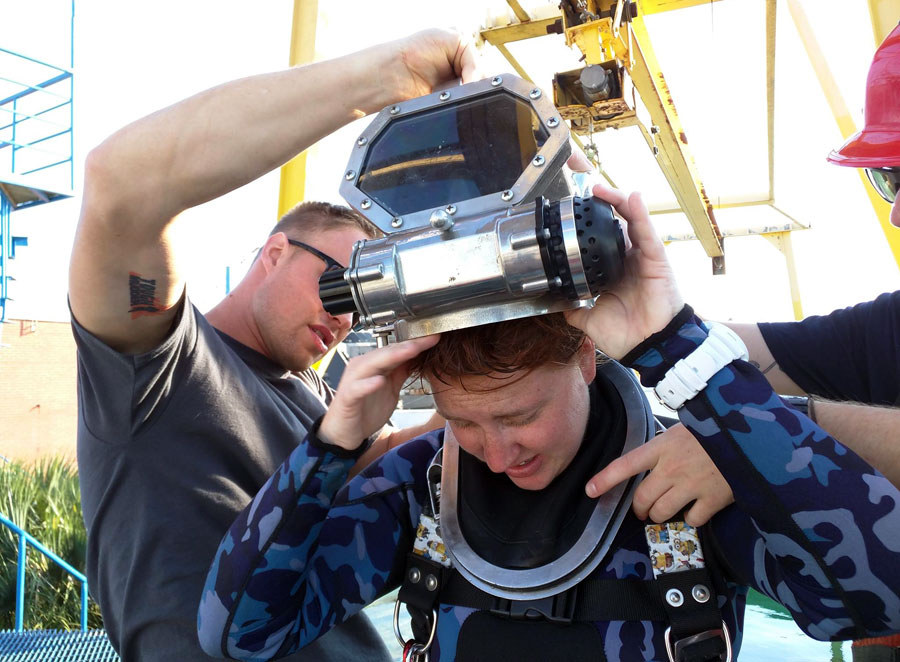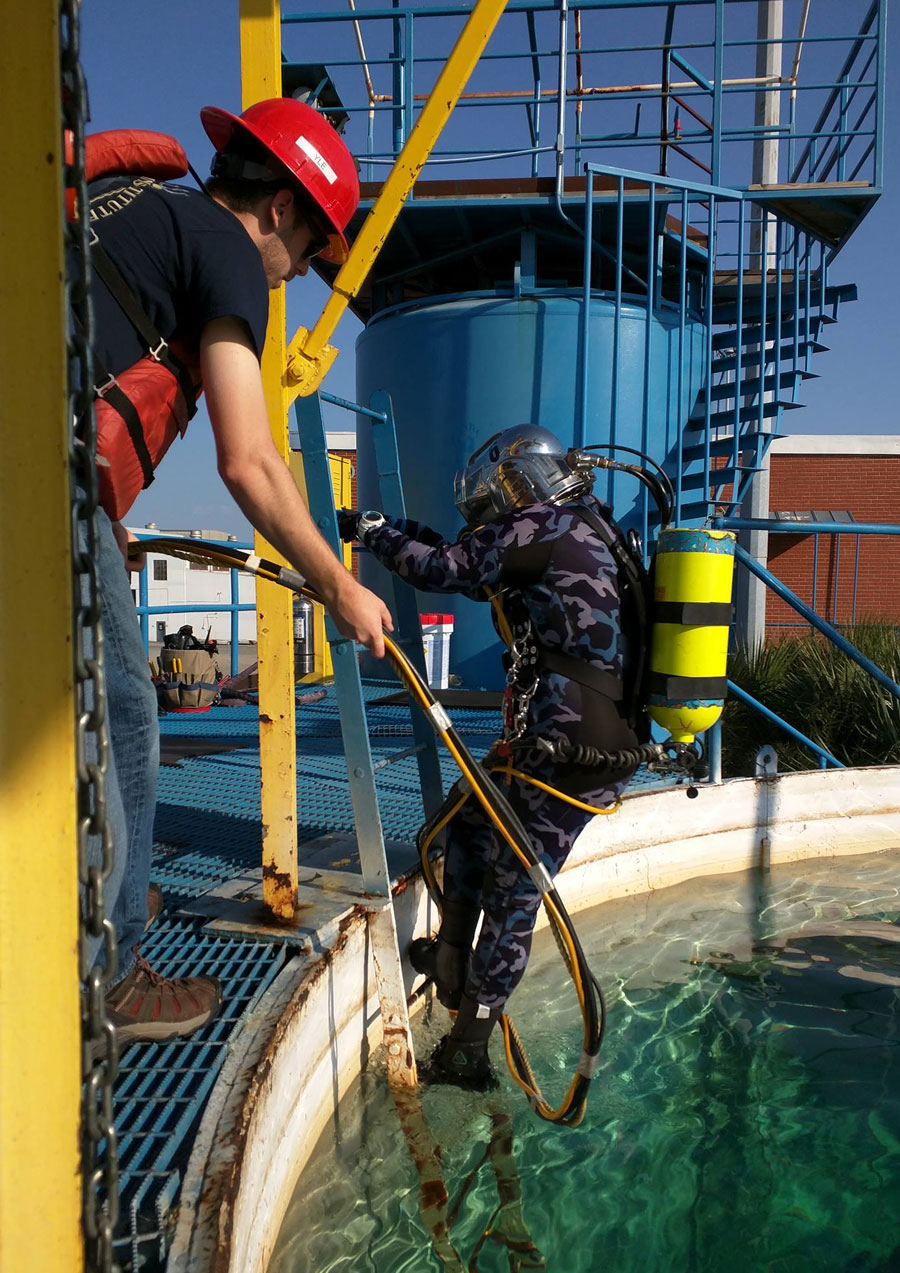Last year, Rebecca completed her BA in Marine Science and Communication from the University of Hawaii at Hilo. While studying at University, she held four jobs – Research Assistant, Turtle Responder, Dive Master and Outdoor Ed-Venture Leader. She also completed the University’s Science Diver course.
After graduating, Rebecca was awarded a prestigious scholarship by the International Diving Institute. The scholarship awarded her full tuition – $16,000 – for IDI’s “Mixed Gas Surface Supplied Diving Program”. The 640-hour course that will enable her to be certified as a commercial diver, which is the certification required to meet OSHA and other government requirements on a great many diving jobs. The award was announced at DEMA and The Academy of Underwater Arts and Sciences. Since May, Rebecca has been at the IDI training center in North Charleston, South Carolina.Although she’s only been in her commercial diver training for a month or so, we caught up with Rebecca to find out how her training is going in the extremely challenging field of commercial diving. Here’s what she shared with us, and a look at what commercial divers learn in the first segment of their course:
“What started off as a general review of basic scuba principles turned into broadening my horizons, not only in the classroom but underwater as well. Our first orientation dive had us hanging upside down, doing flips and soaring across a large volume tank of water, called the “wet tank”. While with scuba neutral buoyancy is a diver’s aim, the commercial diver wants both feet firmly planted, and hops around the bottom like an astronaut.
Our first trials in the “wet tank” consisted of attaching a flange to the wall while not touching the ground until the project is completed. This was the challenge for both 4 and 8-bolt flanges, with my personal favorite being the 4-bolt blind. We had to get our “project” neutrally buoyant, find the wall attachment and attach the flange to the wall all while blind folded! I giggled to myself underwater while waving my arms back and forth trying to find the wall attachment point.
Once we have proven ourselves worthy in the wet tank, we graduate to the river! Now this may sound exciting, but the Cooper River is a stinky brown piece of water. Well, at least our slice of it is. Walking around underwater through the “pluff mud” is a harrowing experience if you have fears of the dark, being trapped in mud, and limited visibility. I found it almost fun- when you are jetting (digging a hole using a water jet) – the mud billows up and completely blocks out the light. You are alone in the dark, but it’s almost a calming feeling with only your breathing and the occasional “How you doing diver?” from topside to break the silence.
So far this course has been a challenge – both mentally and physically. I am doing things I never thought I would and already a little over a month in, I can’t believe how far I have come. There is still much for me to learn and I am excited at the prospect!”
After graduating, Rebecca hopes to become involved in shark research, submersibles, marine archaeology and underwater film and photography. She also wants to inspire younger generations to not only get interested in science and ocean exploration, but to take care of the ocean, and inspire them to leave their comfort zone to travel and explore.
• • •
California Diver wishes Rebecca Ziegler the best as she continues her commercial dive training program. We’ll follow up with her progress and further insights into the commercial dive training program at the International Diving Institute as she continues her training. To learn more about Rebecca and follow her journeys, visit her website at www.becthediver.com.
.


